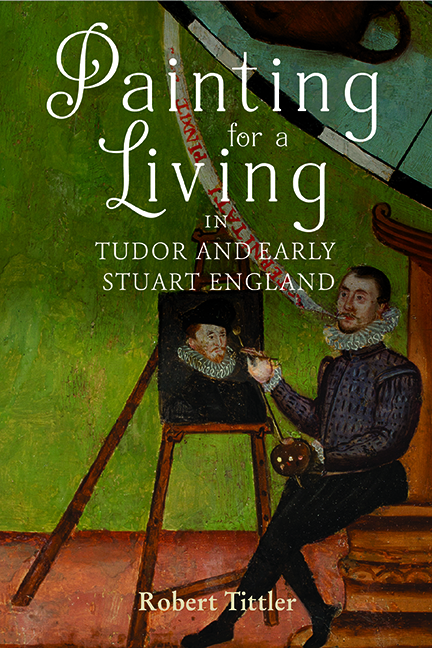Book contents
- Frontmatter
- Dedication
- Contents
- List of Illustrations
- Preface
- Acknowledgements
- Editorial Conventions and Abbreviations
- Part I Introduction
- Part II Kinds of People
- Part III Particular Specialities
- Part IV Ways and Means
- Part V Conclusion
- Bibliography
- Index
- STUDIES IN EARLY MODERN CULTURAL, POLITICAL AND SOCIAL HISTORY
Introduction: Priming the Canvas
Published online by Cambridge University Press: 26 May 2022
- Frontmatter
- Dedication
- Contents
- List of Illustrations
- Preface
- Acknowledgements
- Editorial Conventions and Abbreviations
- Part I Introduction
- Part II Kinds of People
- Part III Particular Specialities
- Part IV Ways and Means
- Part V Conclusion
- Bibliography
- Index
- STUDIES IN EARLY MODERN CULTURAL, POLITICAL AND SOCIAL HISTORY
Summary
Given the numerous major gallery exhibits of recent years and the scholarship which has supported or been inspired by them, one's first response to the notion of painting in Tudor and early Stuart England is to think especially of its portraiture, and of the artists who produced it. In both art historical scholarship and the public imagination, that subject has often been construed in the Tudor era as a journey from Holbein to Hilliard, and under the early Stuarts as culminating in the work of Rubens and Van Dyck. These time-honoured approaches have enormous value, and there is little to be gained by denying their rightful place in the art history of the nation. But there remains another, less often recognized, dimension to this familiar story. It lies in the political, social, and economic contexts in which contemporary painters lived and worked, and thus in the painters’ occupation itself in these same years. Few painters, either then or now, rose to the status of celebrities or to what we would recognize as artists, but even Holbein and Hilliard, Rubens and Van Dyck, were nevertheless still painters. Along with the many, far lesser practitioners of their craft, they drew upon a common denominator of activities, practices, and concerns, and none of them remained unaffected, in their lives or their work, by the world around them. In short, though they may have varied widely in their fame and fortunes, all those who painted for a living in this era found their place on the same occupational continuum. Unless they had someone to do it for them, every one of them will have had, for example, to mix their paints, prime their surfaces, clean their brushes, and pay their rent.
This is a study of those who, whether ‘artists’ or not, painted for a living in Tudor and early Stuart England. Though it draws at times from art historical and curatorial scholarship, much of its perspective emerges from the political, religious, social, and economic history of that era. It draws as well from a comprehensive biographical database of some 2,800 people – strangers and native English, Londoners and provincial townsmen, men and sometimes women, celebrity artists and ‘mere painters’, and practitioners of every corner of the craft – who painted one thing or another and did so for a living in that time and place.
- Type
- Chapter
- Information
- Publisher: Boydell & BrewerPrint publication year: 2022



